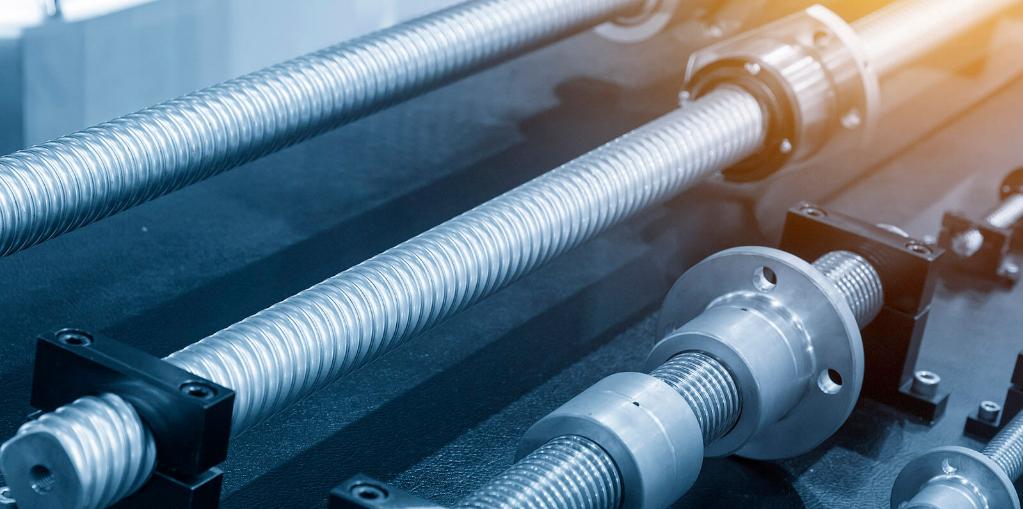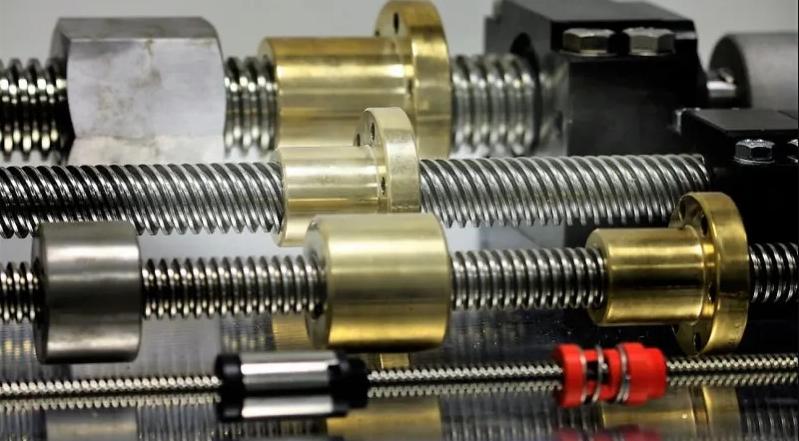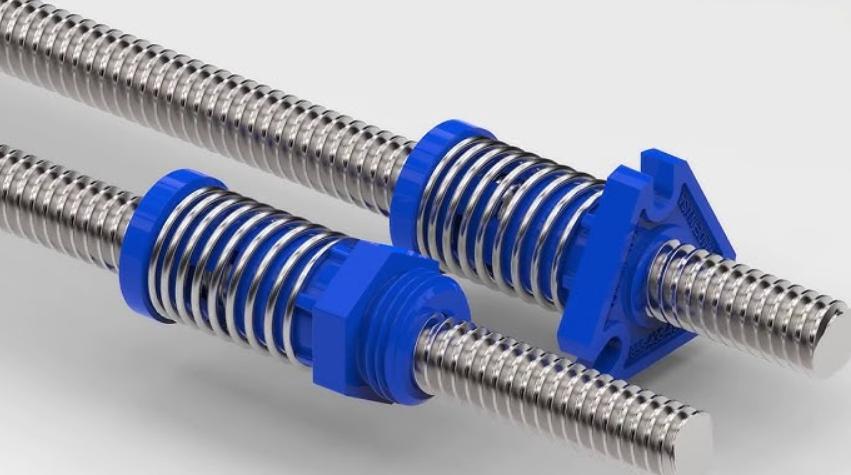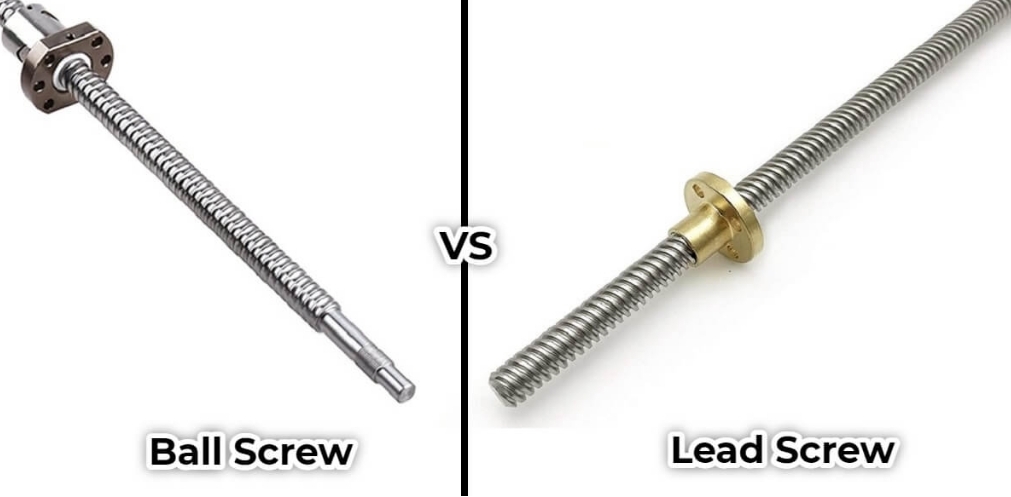Ball Screw vs. Lead Screw play vital roles in CNC machinery. Both have unique features and applications. Here, a deep dive into their specifics will be undertaken, providing a robust understanding of their mechanisms, advantages, and differences.

In CNC machinery, ball screws offer accuracy and precision. A critical component, they ensure safety in CNC milling machines. Use safety goggles and proper PPE. CNC operators must wear ear protection.
Never leave tools around moving parts. Before operating, always double-check settings. Regular maintenance checks prevent unexpected failures. High RPMs demand utmost caution. Mishandling can damage equipment. Understand machine limits. Overloading may lead to breakdowns. Always monitor and follow safety protocols.

Lead screws dominate CNC machines for specific tasks. For safety during CNC horizontal milling, always prioritize precaution. CNC machine doors must remain closed. Only trained personnel should access machines. Keep hands away from moving parts. Clear the debris promptly to avoid accidents.
Secure loose clothing and hair. Ensure workspace has adequate lighting. Emergency stop buttons should be within reach. Training sessions enhance machine handling knowledge. Staying updated with safety norms remains essential.
In ball screws, circulating balls play a crucial role. Circulating balls move between the screw and nut. These balls carry the load. Their main job is to minimize friction.
Recirculation tracks guide circulating balls. When the nut turns, balls move along these tracks. Without these tracks, balls would scatter. Their design ensures a smooth, efficient operation.
The rotating nut is pivotal. Ball screws rely on this part for movement. When the nut rotates, linear motion occurs. Its synchronization with circulating balls aids in motion.
Helical grooves are on the screw shaft. Balls fit into these grooves. Precision in their design ensures accurate movement. Hence, machinery achieves desired results.
Friction affects machine efficiency. Ball screws, by design, offer low friction. Circulating balls ensure that. Machines using ball screws perform better due to reduced friction.
Load distribution is even in ball screws. Circulating balls bear the load. Their placement and movement distribute the force. As a result, ball screws handle significant loads without damage.
Your main goal with a ball screw is linear motion. It converts rotational motion to linear. The collaboration of the screw and nut ensures this.
In ball screws, torque conversion is efficient. The design enables effective conversion from rotational to linear force. Hence, machines have better response times.
The core of a lead screw is the threaded rod. Threads run along its length. These threads interact with a matching nut. That interaction causes motion.
Every lead screw has a matching nut. This nut has internal threads. It fits snugly over the threaded rod. When the rod turns, the nut moves.
Unlike ball screws, there's direct contact here. The threaded rod and matching nut touch directly. This design means more friction during operations.
Lead screws offer rotation-to-linear movement. When the screw rotates, linear motion occurs. Machines depend on this simple yet effective operation.
Thread pitch impacts movement. Different pitches mean different movement rates. Choosing the right pitch is key for machine performance.
Lead screws rely on sliding motion. The nut slides along the threaded rod. This sliding causes friction points.
Due to direct contact, friction points emerge. These points can cause wear over time. Regular maintenance is crucial to address these friction points.
Lead screws lack recirculation. There are no circulating balls. Thus, wear and friction can be concerns when compared to ball screws.

Ball Screws offer higher efficiency, often exceeding 90%, in comparison to Lead Screws which usually hover around 30%.
In the world of CNC machinery, Ball Screws can support greater loads due to their recirculating ball bearings, providing an edge over Lead Screws.
Ball Screws have less friction owing to their rolling motion, whereas Lead Screws depend on a sliding motion, which results in higher friction levels.
Ball Screws surpass in terms of speed, with a capability to handle rapid movements efficiently, unlike Lead Screws which have a moderate speed limit.
A notable feature of Ball Screws is the minimal backlash, providing precision. In contrast, Lead Screws often show more backlash.
Precision is pivotal in CNC machinery. Ball Screws provide superior positional accuracy compared to their Lead Screw counterparts.
When maintained properly, Ball Screws boast an extensive service life, longer than that of Lead Screws.
Investing in a Ball Screw might be pricier initially, but consider the long-term benefits. On the other hand, Lead Screws are more budget-friendly at the onset.
Due to lower friction levels, Ball Screws tend to have a slower wear rate than Lead Screws, ensuring longevity.
Regular lubrication is vital for Ball Screws to maintain efficiency. Lead Screws, while still requiring lubrication, are less demanding in frequency.
The reduced friction in Ball Screws results in less heat generation, a stark difference from the heat produced by the higher friction in Lead Screws.
Operation noise is an often overlooked factor. Ball Screws, due to their design, tend to operate more quietly than Lead Screws.
Ball Screws can handle higher thrust forces efficiently due to their rolling elements, outperforming Lead Screws in this regard.
Ball Screws often come in varied tolerance grades, ensuring precision, whereas Lead Screws might have limited tolerance options.
Ball Screws provide a variety of nut options to cater to specific needs, while Lead Screw options might be more constrained.
|
Feature |
Ball Screw |
Lead Screw |
|
Efficiency Levels |
High (up to 90-95%) |
Moderate (20-40%) |
|
Load Carrying |
High |
Moderate |
|
Friction Variation |
Low |
High |
|
Speed Capacity |
High RPMs (up to 3000 RPM) |
Moderate RPMs (up to 600 RPM) |
|
Backlash Presence |
Minimal |
Noticeable |
|
Positional Accuracy |
High (+/- 0.005 mm) |
Moderate (+/- 0.05 mm) |
|
Service Life |
Longer (up to 10M cycles) |
Shorter (up to 1M cycles) |
|
Initial Costs |
High |
Lower |
|
Wear Rate |
Slow |
Faster |
|
Lubrication Needs |
Regular; specialized lubricants |
Less frequent; standard lubricants |
|
Heat Generation |
Lower due to reduced friction |
Higher due to increased friction |
|
Noise Levels |
Quieter due to ball bearings |
Noisier due to metal-to-metal contact |
|
Thrust Force |
Can handle higher thrusts due to ball design |
Moderate thrust capability |
|
Tolerance Grades |
Fine tolerances (up to P5) |
Standard tolerances |
|
Nut Variations |
Multiple design variations for applications |
Limited design variations |
Table on Key Differentiating Features of Ball Screw vs Lead Screw CNC!
Ball screws dominate with high dynamic load capacities. Lead screws, on the other hand, often handle lighter loads.
Ball screws offer speeds up to 1500 RPM. Conversely, lead screws top out at lower RPMs, around 800.
Lead screws present a higher friction coefficient. Ball screws display reduced friction, enhancing movement precision.
Ball screws, with precision helical paths, exhibit a greater mechanical advantage. Lead screws provide moderate advantage due to simpler construction.
Ball screws guarantee smooth, near-silent rotations. Lead screws might exhibit slight unevenness.
With ball bearings, ball screws achieve faster linear speeds. Lead screws, lacking these bearings, move at moderate speeds.
In high-speed operations, ball screws respond more promptly. Lead screws, suitable for slower applications, lag in responsiveness.
Ball screws can support both axial and radial loads. Lead screws mainly focus on axial loads.
With proper lubrication, ball screws tend to have extended lifespans. Lead screws, although sturdy, require more frequent maintenance.
Ball screws operate at around 90% efficiency. In contrast, lead screws often hover at 30-40% efficiency.
Due to ball bearings, ball screws exhibit superior thrust handling. Lead screws, however, provide less thrust due to the absence of bearings.
Precision is the hallmark of ball screws, offering consistent positional repeatability. Lead screws might encounter slight deviations.
Ball screws handle wider operational ranges. Lead screws are limited to specific, narrower operational windows.
Ball screws resist temperature-induced performance drops. Lead screws, in elevated temperatures, may experience decreased efficiency.

In CNC operations, positional tolerance dictates how closely a machine's actual position matches the commanded position. Ball screws typically excel here, offering smaller deviations due to their efficient design.
Every screw has threads. Pitch errors arise when there's a difference between the desired and actual spacing of these threads. Ball screws usually exhibit lower pitch errors than lead screws, enhancing their performance in precision applications.
Lead is the distance a nut travels for one complete turn. A ball screw, with its advanced design, often showcases reduced lead deviations, thus ensuring smoother motion.
Repeatability refers to the screw's ability to consistently return to a specific position. With the inclusion of ball bearings, ball screws often outperform lead screws in this metric.
Axial play involves the movement along the axis without rotation. Minimized axial play is crucial for precision mold, and ball screws often surpass lead screws in reducing this undesired motion.
For a screw to be effective, its movement should be linear and consistent. Here, ball screws often offer greater consistency due to their design, ensuring predictable operations.
Resolution pertains to the smallest movement a machine can make. With finer threads and efficient design, ball screws generally provide superior resolutions compared to lead screws.
Backlash, or the slight movement without actual machine command, can be detrimental. Ball screws, with their precision engineering, often have fewer backlashes, enhancing machine reliability.
The quality of surface finish determines smoothness. Ball screws, due to their advanced manufacturing techniques, usually offer a better surface finish than lead screws.
Straightness error is the deviation from a perfect straight line during movement. Once again, ball screws, given their design, tend to have lower straightness errors.
Referring to the movement of the screw's end, minimizing end play is vital. Ball screws, with their precision components, typically demonstrate reduced end play.
How accurately a screw rotates about its axis denotes its rotational precision. Here, ball screws, thanks to their design and material choice, offer superior rotational accuracy.
This is the angle by which the screw deviates from its intended direction. The design of ball screws often ensures they suffer from lower angular misalignments than lead screws.
The accuracy with which threads are cut determines thread form accuracy. Ball screws, owing to their meticulous manufacturing processes, tend to have more accurate thread forms than lead screws.

Precision remains paramount in CNC machining. Ball screws, due to their minimal backlash, fit perfectly for precise tasks. Superior accuracy ensures products meet exact standards.
Lead screws handle hefty loads commendably. Their robust build and design mean greater weight-bearing capacity, crucial in heavy machinery industries.
For operations that demand slower speeds, lead screws dominate. Their design, especially with Acme threads, ensures control during slow movements.
Ball screws excel in high-speed applications. Due to reduced friction from ball bearings, rapid linear motions become feasible, enhancing CNC machine output.
Lead screws serve well in straightforward linear motions. Their simplicity and cost-effectiveness make them preferred choices for such tasks in many industries.
In applications needing frequent, consistent motions, ball screws shine. Their life cycle and efficiency, especially under repetitive conditions, is commendable.
Ball screws, with their low friction and high precision, make vertical lifts smoother. Elevating components becomes seamless, resulting in fewer errors during operations.
For tasks that require high cycle rates, ball screws stand out. Their design ensures they function optimally under intense repetitive conditions, essential in many CNC tasks.
Lead screws provide consistent torque. CNC machines often require stable torque, and lead screws provide this without falter.
In environments where noise minimization is critical, ball screws are ideal. Their operation is smoother and quieter than their counterparts, leading to less disruption.
For tasks sensitive to vibrations, lead screws serve well. Their robustness ensures stability, mitigating vibrations and maintaining workpiece quality.
Ball screws prove advantageous in achieving fine feed rates. The precision and control they offer ensure CNC machines function at desired speeds efficiently.
Speedy positioning becomes feasible with ball screws. Their design allows for rapid adjustments, resulting in time savings during operations.
In tasks where efficiency is paramount, ball screws excel. Reduced friction means less energy loss, leading to superior CNC machine performance.

Understand the significant difference in sound when operating Ball Screws and Lead Screws. Ball Screws typically generate less noise due to their smooth ball bearings, offering a quieter CNC operation.
High precision machinery requires monitoring of operational frequency. Ball Screws exhibit a higher frequency range compared to Lead Screws because of the precise ball bearing mechanism.
Continuous operations can induce distinct vibration patterns. Ball Screws have refined vibrations, often attributed to better load distribution, while Lead Screws may demonstrate a broader range of vibration signatures.
CNC components, such as Ball Screws and Lead Screws, might have varied structural resonance. Appropriate machinery adjustments are crucial to avoid any disruption in operation.
Effective noise damping plays a pivotal role in CNC machinery. Ball Screws, with their specific design, often require fewer damping systems, while Lead Screws might need more intricate setups for optimum noise reduction.
Recognize that Ball Screws can handle higher dynamic loads. Their design enables them to manage rapid load changes better than Lead Screws.
Drives play an essential role in producing vibrations. While Ball Screws tend to have reduced drive-induced vibrations, Lead Screws might present more prominent drive vibrations due to their thread form.
The way Ball Screws and Lead Screws are mounted can significantly influence noise and vibration. A stable, robust mount ensures minimal operational disturbances.
External elements, such as temperature variations or misalignment, can impact performance. Regular maintenance is a must to negate these effects on both Ball and Lead Screws.
Effective feedback loops are essential. Monitoring systems should be in place to promptly address any anomalies in noise or vibration patterns, ensuring smooth CNC operations.
The housing or casing for Ball and Lead Screws can produce resonance. Ensure the housing is robust and of high quality to prevent unwanted noise.
Noise from drive motors can add to the overall operational noise. Utilizing high-quality motors can significantly reduce unwanted sounds in both systems.
Ball Screws, due to their design, typically experience less friction, resulting in a quieter operation. In contrast, Lead Screws might have elevated friction levels, leading to more noise.
Motion stability is paramount for precision tasks. Ball Screws offer superior motion stability, while Lead Screws, though reliable, might not provide the same level of steadiness during operation.
During operation, both ball screws and lead screws generate heat. Understand that prolonged operation increases the risk of overheating.
Materials expand with heat. Ensure monitoring, as thermal expansion might affect the precision of CNC operations.
Friction between parts causes heat. With ball screws, the rolling friction minimizes this, while lead screws experience more due to sliding friction.
Consider the cooling needs. Prolonged machine operation necessitates cooling measures to prevent mechanical failures.
Materials conduct heat differently. Selecting materials with good thermal conductivity helps in managing heat effectively.
Uneven heat across the machine leads to temperature gradients. Such gradients might affect machine accuracy and reliability.
Always employ effective heat dissipation methods. Fans, coolant systems, and thermal pads are essential for maintaining machine health.
Thermal stability ensures consistent operation. Ball screws typically offer better thermal stability due to minimized friction.
Your surroundings matter. Dust, humidity, and air temperature can influence the heat management of the machine.
High temperatures can break down lubricants. Ensure the right lubrication choice for optimal machine performance.
Always monitor the operation temperature. Surpassing the recommended temperature might result in hardware damage.
Excessive heat leads to thermal distortion. Such distortions can compromise the precision and reliability of CNC processes.
Be wary of external factors. Ambient temperature variations can affect the overall machine temperature, demanding adjustments.
Both Ball Screw vs. Lead Screw have essential roles in CNC. Each has its benefits and challenges. Understanding their functionalities can guide the best choice for machine operations. For quality parts and expert consultation, visit CNCYANGSEN.